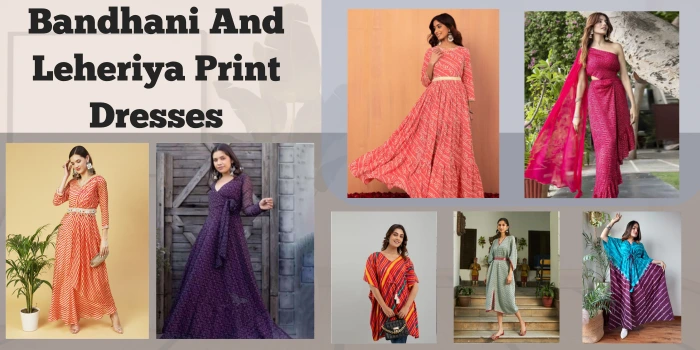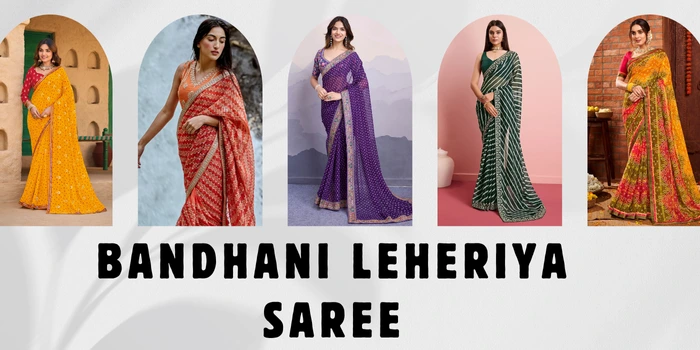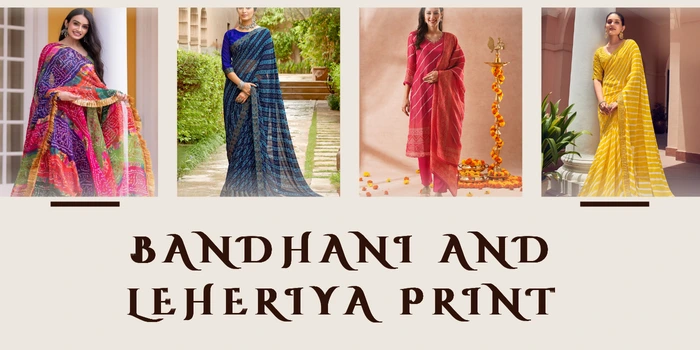Find out the colourful world of Bandhani and Leheriya prints, two of India’s maximum iconic traditional cloth artwork forms. Rooted in centuries-old craftsmanship, those prints rejoice within the intricate art of tie-dye, featuring patterns that mirror the spirit, way of life, and hues of India’s rich cultural history. Whether or not you are a lover of ethnic style, an admirer of conventional textiles, or this specific manual takes you through the origins, techniques, cultural relevance, and modern-day resurgence of this celebrated print’s tradition.
From their history inside the royal courts of Rajasthan and Gujarat to their presence on runways and festive wardrobes these days, discover how these styles have stood the test of time. Analyse what makes each print wonderful, how artisans create them, using age-old strategies, and why they hold to enchant designers and wearers alike. Permit this be your final exploration into the paranormal world of Bandhani and lahariya print, wherein each thread tells a colourful tale.
What are bandhani and leheriya print?
India’s textile traditions are as numerous as its way of life, and two of the maximum enthralling examples of this heritage are Leheriya and Bandhani.
Bandhani print: It is a kind of tie-dye practised especially in Gujarat and parts of Rajasthan Bandhani print. Its call comes from the word “bandh”, because of this “to tie.” The fabric is pinched and tied in tiny knots using threads, then dyed in colourful colours. Once the knots are untied, they screen tricky dot patterns organised in floral, round, or geometric formations. Bandhani lehariya saree is often utilised in dupattas, turbans, and festive ethnic wear, symbolising pleasure and culture.
Leheriya print: Then again, it’s miles acknowledged for its wavy, ripple-like styles. Local to Rajasthan, it’s made by means of method of rolling material diagonally and tying it before dyeing. The result is a flowing plan that resembles water waves. It is regularly worn throughout galas, especially during the monsoon season, reflecting renewal and celebration.
Why are these prints famous in 2025?
In 2025, Bandhani and Leheriya prints are gaining renewed reputation for their combo of cultural history and sustainable style enchantment. As customers shift toward handmade, green picks, those conventional Indian dyeing strategies offer authenticity, artistry, and a strong factor. Designers are reimagining them in contemporary-day silhouettes, making them famous on global runways and social media. Their colourful shades, timeless patterns, and cultural roots resonate with both ethnic and present-day fashion lovers. You may explore curated collections that feature both Bandhani and leheriya background craftsmanship at platforms like Unboxbyshreyan, where history meets modern-day format aesthetics with the Leheriya pattern.
Which dress to wear, bandhani and leheriya in 2025?

Bandhani and leheriya print dress, you can wear in 2025, some keywords mentioned here:
- Bandhani leheriya saree: At the exact time as styling Bandhani and Leheriya sarees, compare them with the tiniest jewellery to allow the colourful styles to glow. Normally, pick out the Rana’s jaipur bandhani and leheriya saree contrasting blouses or traditional silver accessories to stability the Festive wear with splendour and lifestyle.
- For fits and kurtas: For fits and kurtas, choose lightweight Bandhani or Leheriya material to ensure comfort and breathability, especially in warmer seasons. Pair them with minimal add-ons to allow the vibrant prints to stand out and create an effects stylish appearance.
- Bandhani one piece dress: A Bandhani one piece dress pairs beautifully with minimal earrings to allow the difficult styles to stand out. For a balanced appearance, fashion it with neutral shoes and a stable-colouration clutch to focus on the colourful tie-dye prints.
What is the Difference between bandhani and leheriya?
Bandhani print | Leheriya print |
Bandhani and Leheriya prints are traditional Indian tie-dye techniques, but they range in styles, strategies, and cultural symbolism. Bandhani, more frequently than no longer from Gujarat and elements of Rajasthan, entails tying tiny portions of cloth with thread to create dot-like patterns which include plants, circles, or squares. It’s an in-depth, tricky method that forms complicated designs and is frequently worn at some point in weddings and religious ceremonies. | Leheriya, local to Rajasthan, uses a diagonal rolling and tying method to provide wave-like stripes akin to flowing water. It’s typically less complicated in sketch, however, visually dynamic, often related to monsoon fairs and colourful everyday put on. While Bandhani places greater approximately precision and symbolism, Leheriya emphasises flow, colouration mixing, and motion culture with Indian dress. |
The future of indian prints
The destiny of Indian prints appears colourful and globally promising, as conventional techniques like Bandhani, Leheriya, Kalamkari, and Ajrakh are gaining renewed perception in modern-day fashion. With a developing hobby in sustainable and home-made apparel, those age-old crafts are being reimagined via modern-day silhouettes, fusion placed on, and virtual structures. More young designers are mixing innovation with records, giving Indian prints an easy identification beyond borders. Online marketplaces, fashion influencers, and aware clients are fueling their resurgence by valuing authenticity over mass production. Moreover, authorities and NGO projects are assisting artisans through education and worldwide publicity.
Buy the bandhej leheriya saree for the occasion

A Bandhej Leheriya saree is an appropriate pick for your subsequent birthday celebration. The fusion of problematic tie-dye styles and colourful colourations makes it fine for weddings, fairs, or cultural gatherings. Those sarees are not garments, they’re wearable art that speaks of history and craft. Whether or not you select the dotted grace of Bandhej or the wave-like allure of Leheriya, you’ll locate lovely selections crafted in georgette, chiffon, or silk. Structures like Myntra offer curated collections supplying every traditional and contemporary pattern, making it much less complex than ever to blend cultural splendour with present-day silhouettes. Pair yours with oxidised jewellery and minimal heels for a glance that’s both festive and effortlessly elegant.
Conclusion
Conventional Bandhani and Leheriya prints are more than ornamental arts; they’re colourful expressions of India’s cultural soul. Rooted in centuries-old craftsmanship, those techniques bring memories of heritage, symbolism, and network. From rituals to celebrations, they’ve dressed generations with meaning and pleasure. These days, as they combine into present-day fashion, they hold to honour their origins while evolving with time. Maintaining these crafts’ capacity, retaining a dwelling legacy, where every thread ties us to culture, identity, and the splendour of handmade art.
FAQs
What fabric is used to make these prints?
They make prints only from cotton, chiffon and silk are commonly used in bandhani and leheriya prints.
Why are so popular this prints?
Bandhani prints are common in Gujarat; laheriya is the main type in Rajasthan.
Can I wear to every event?
Yes, bandhani and leheriya print both are stunning for events, puja and traditional sangeet.
Why are so important this prints for indian culture?
The reflects traditional and regional pride passed think to this generation.

